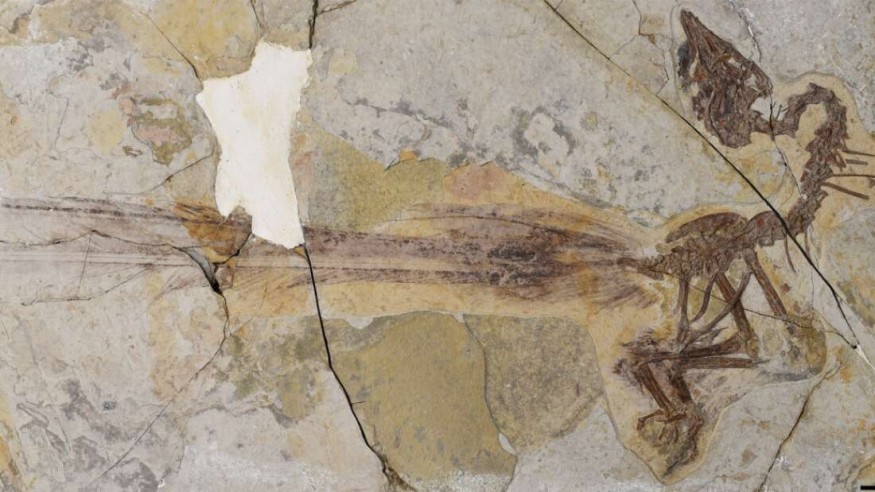A new paleontological research was conducted regarding the mysterious Early Cretaceous fossil. Experts theorized that the previous owner of the fossil is an avian animal. Moreover, the prehistoric bird possesses a unique structure which leads to the conclusion that the fowl is most likely a new species that we are not familiar with.
Fitness and Sexual Selection

According to the experts, the new bird fossil indicates that the animal's anatomical structure is composed of stunning tail feathers which measure significantly longer compared to its main body. The rare body to tail ratio of the specified bird has not been observed in any of the dinosaurs present during the time, nor another mislabelled tail structure from the massive Mesozoic birds such as the Ornithuromorpha.
Ornithuromorpha species also lived in the prehistoric Earth, potentially having the biggest of birds ever in the history of evolution, and was the ancestors of almost all of the bird species including the fowls present today. Among the most important evolutionary studies recorded with the help of this clade is sexual selection, which indeed plays a part in the survival of the species and could be the first known account of the phrase 'fashion over function.'
Evolution includes several aspects that, when collectively balanced, could lead to a great outcome for the present species and the lineage to come. One of the known factors that pushes a great survival trait is keeping up the fitness of a species body. On different occasions, the fitness of a species does not require strength and perfect anatomical build, but by adapting the best of every asset that has the potential to benefit both the animal and its habitat. Examples of the unique kind of fitness are the flat anatomy of the angel sharks and the massive eyes of the tarsiers.
Disadvantage of Fashion over Function Observed Analyzed in Yuanchuavis Kompsosoura
However, not all of the fitness observed under the sexual selection could benefit the animal who can use it. There are accounts where ability performance is hindered by the fitness feature itself, making the species attractive to potential mates, but also vulnerable in terms of survivability. According to IFLScience, the disadvantage can be observed in some of the birds present in today's biodiversity, including pheasants and peacocks. These avians have massive ornaments naturally flourishing from their feathers and are used for effective courting, but are not quite useful when in dangerous situations.
The study between the correlation of sexual and fitness advantage was highlighted in the recent findings of the Early Cretaceous bird. According to the experts, the bird had a massive amount of tail feathers, scaling 150 percent larger than its main body.
Yuanchuavis kompsosoura was the bird focused on the recent investigation. The group is considered one of the most active and most successful species under the Mesozoic fowls. The Y. kompsosoura is believed to have existed alongside Enantiornithes, although these birds were significantly smaller than other groups and became extinct 66 million years ago.
The fancy tails of the Y. kompsosoura are among the natural examples of the aspects similar to humans, where the attractiveness is much more prioritized compared to any definitive ability that could be beneficial for flee or fight situations. The study was published in the journal Current Biology, titled "An Early Cretaceous enantiornithine bird with a pintail."
RELATED ARTICLE : Baylor College of Medicine Developed a Novel Approach to Select Subjects for Gene Experiments More Convenient and Faster than Fruit Fly Screening Method
Check out more news and information on Biology on Science Times.











